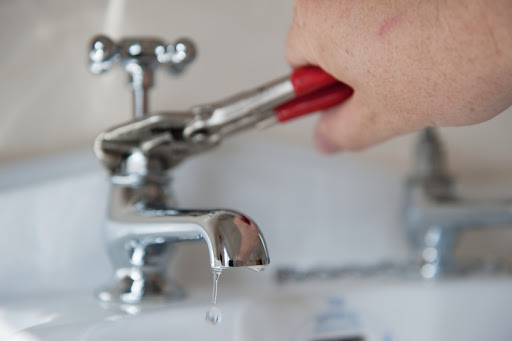Faucet leaks are a common household issue that can lead to significant water damage if not addressed promptly. Understanding how to prevent faucet leaks is essential for maintaining the integrity of your home and contact Leaky Faucet Repair. The effects of water leaks extend beyond mere inconvenience; they can result in costly repairs, mold growth, and even structural damage if left unchecked. The first step in safeguarding your home from these potential hazards is to identify the common causes of faucet leaks.
One primary cause of leaks is the wear and tear of internal components such as washers and O-rings. Over time, these components can become brittle and lose their ability to form a proper seal. This deterioration often leads to constant dripping, which, if ignored, can escalate into more serious plumbing issues. Additionally, improper installation of faucets can contribute to leaks. If the faucet is not correctly aligned or sealed during installation, it may create gaps that allow water to escape. Seasonal changes, particularly freezing temperatures, can also exacerbate the problem. When water freezes in the pipes, it can lead to cracks and leaks once the ice thaws.
Regular Maintenance to Prevent Leaks
Regular maintenance is crucial in preventing faucet leaks and ensuring that your plumbing system operates efficiently. One effective strategy is to conduct routine inspections of your faucets. Regularly check for any signs of dripping or moisture around the base and handle. Early detection can help you address minor issues before they escalate into significant leaks. If you notice any signs of wear on the faucet components, such as cracks or fraying, it is essential to replace them immediately.
Another important aspect of faucet maintenance is cleaning the aerator. Over time, mineral deposits can accumulate in the aerator, which can affect water flow and pressure. A clogged aerator may not directly cause leaks, but it can put additional stress on the faucet and its components, leading to potential failures. To clean the aerator, simply unscrew it from the faucet, soak it in vinegar to dissolve mineral buildup, and rinse it thoroughly before reassembling.
Proper installation of faucets is another critical factor in preventing leaks. If you’re installing a new faucet or replacing an existing one, ensure you follow the manufacturer’s instructions carefully. Proper alignment and sealing during installation will help create a watertight connection, minimizing the risk of future leaks. If you’re unsure about the installation process, consider hiring a professional plumber to ensure everything is done correctly.
Quick Repairs to Stop Leaks
If you notice a leak developing, acting quickly is crucial to preventing further damage. Simple leaky faucet repair can often be done without professional help, saving you time and money. Begin by turning off the water supply to the faucet, usually located under the sink. Once the water is off, you can disassemble the faucet to access its internal components. Most faucet types can be repaired by replacing worn-out washers, O-rings, or cartridge components.
Carefully remove the faucet handle and any retaining nuts. Inspect the parts for signs of wear or damage. If you find worn washers or O-rings, replace them with new ones of the same size. This simple step can often resolve the leak and restore proper function to the faucet. Reassemble the faucet, turn the water supply back on, and check for any remaining leaks.
Sometimes, faucet leaks may be due to more complex issues, such as corrosion within the plumbing or a damaged pipe. If you’ve replaced the internal components and the leak persists, it may be time to consult a plumbing professional. A qualified plumber can diagnose the problem accurately and provide the necessary repairs to protect your home from further damage.
Conclusion:
Preventing faucet leaks is crucial for maintaining your home’s structural integrity and avoiding costly repairs. Regular maintenance, prompt repairs, and proper installation are essential steps in minimizing the risk of leaks. By staying proactive and addressing any signs of wear or damage, you can significantly reduce the chances of water damage from faucet leaks.
In conclusion, understanding the causes and prevention of faucet leaks is essential for every homeowner. Implementing regular maintenance routines, conducting quick repairs, and ensuring proper installation will protect your plumbing system and home from the adverse effects of leaks. Taking these preventive measures not only enhances the longevity of your faucets but also safeguards your home from potential water damage. Prioritizing leaky faucet repair and maintenance can lead to a more efficient plumbing system and a safer, drier living environment.

